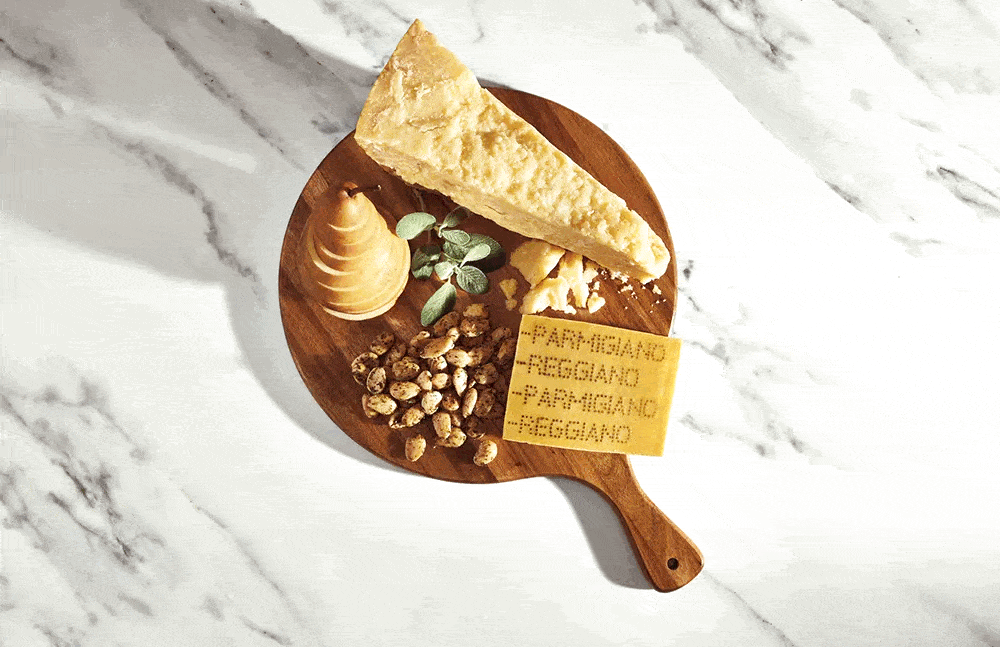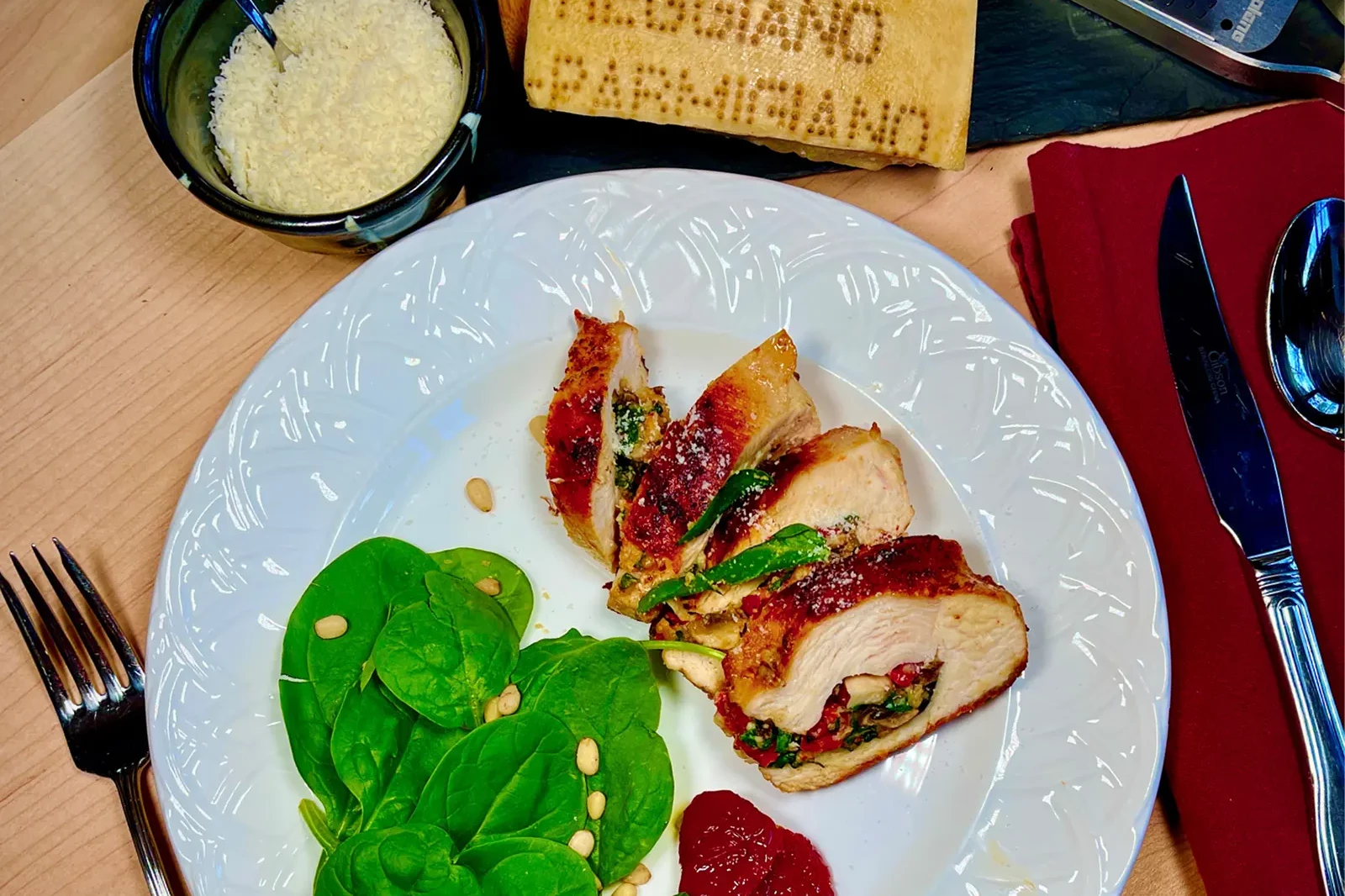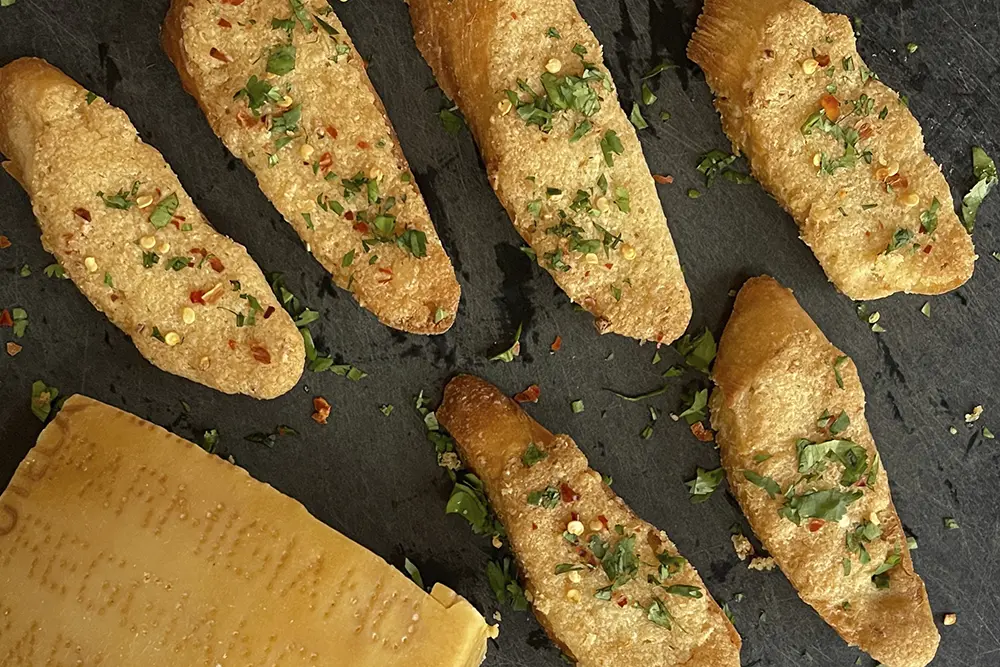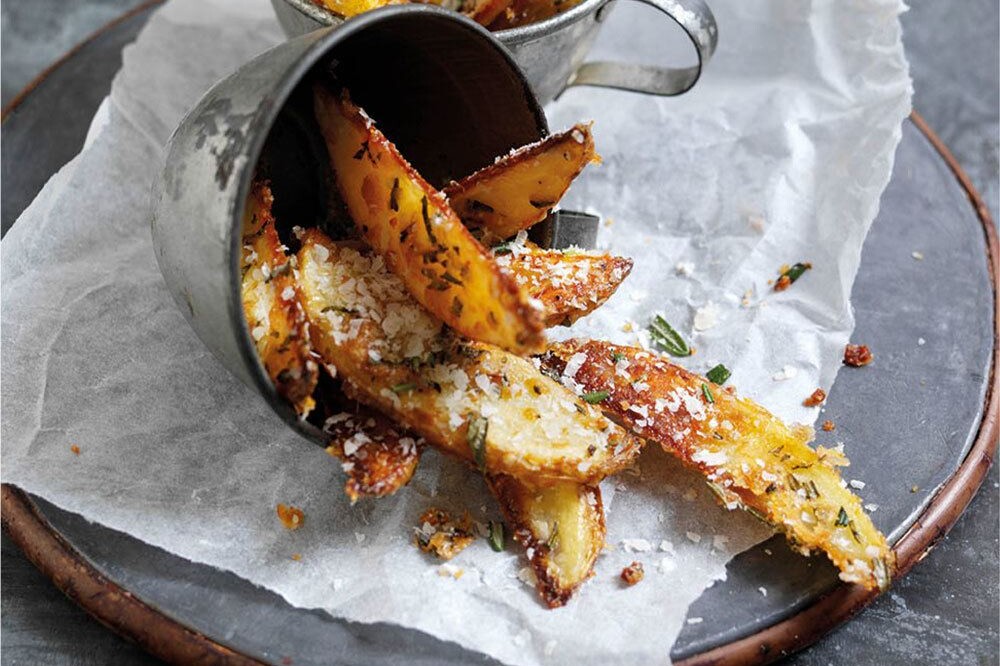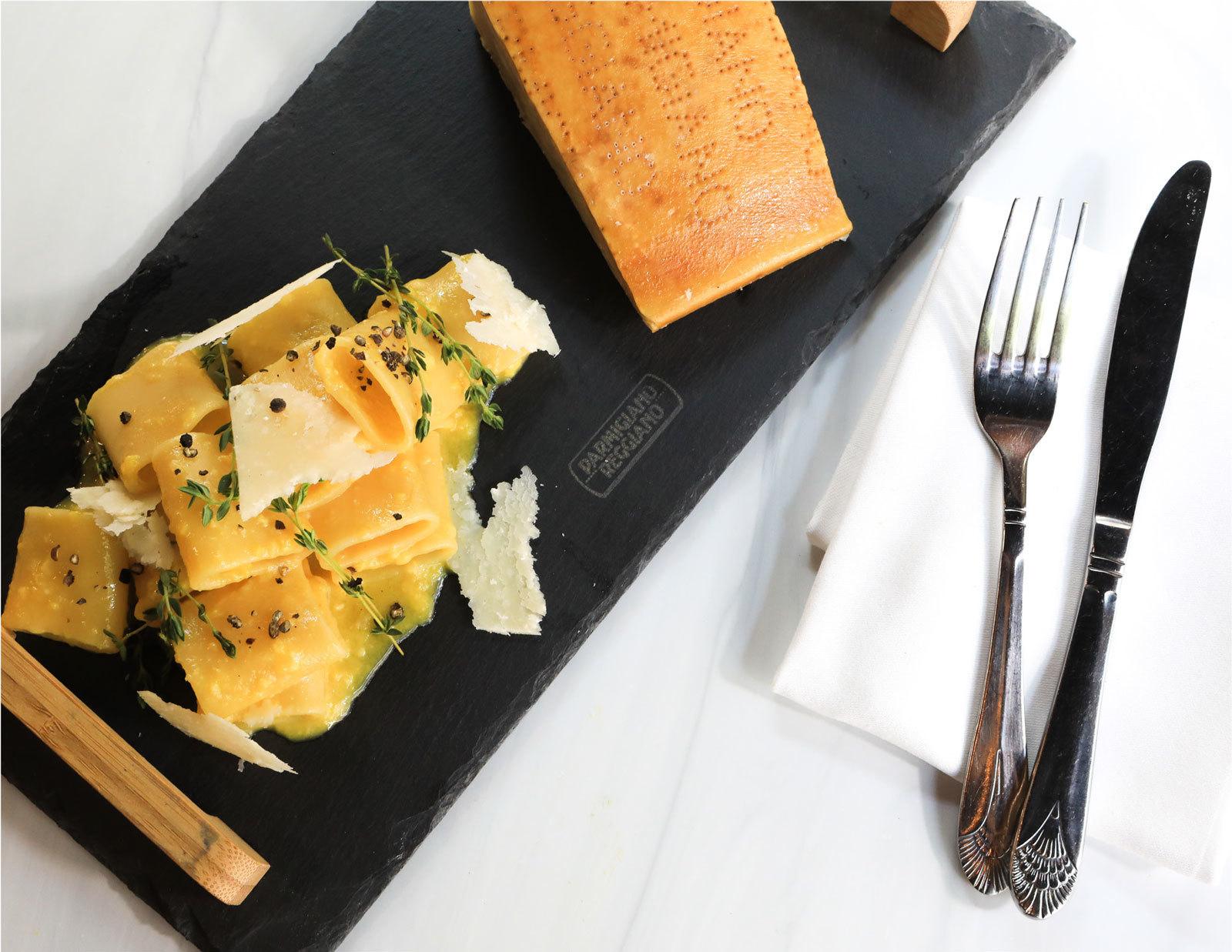
Directions:
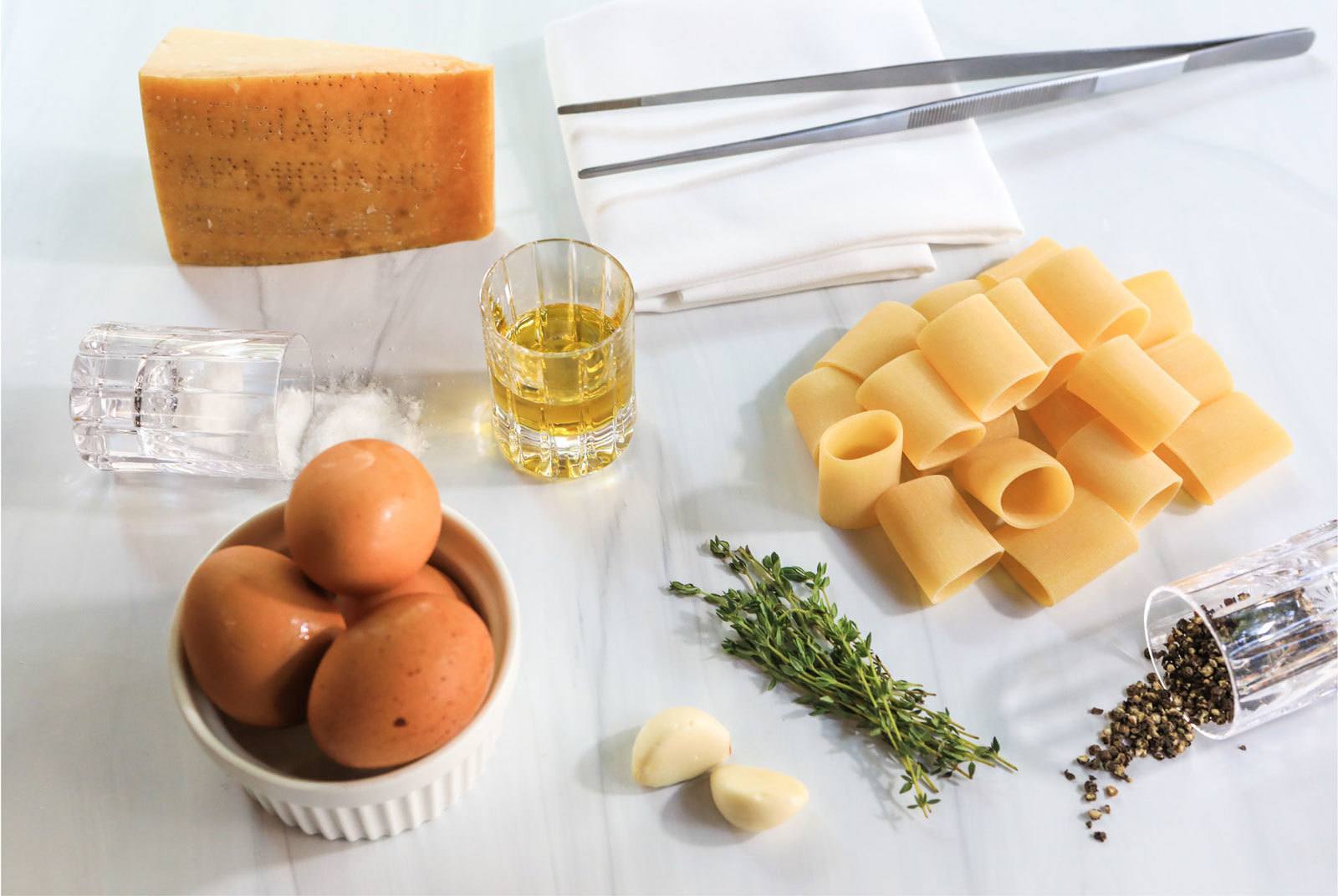
STEP 1
Cook the pasta al dente which is about 1 minute less the time it says on the packaging. Meanwhile, in a heatproof bowl, whisk eggs, season with salt and pepper. Add the Parmigiano Reggiano and combine until the mixture is consistent and full-bodied.

STEP 2
Heat extra virgin olive oil in a non-stick skillet and add garlic. Cook until golden brown and fragrant. Add cooked pasta and sauté until coated in the garlic and oil.
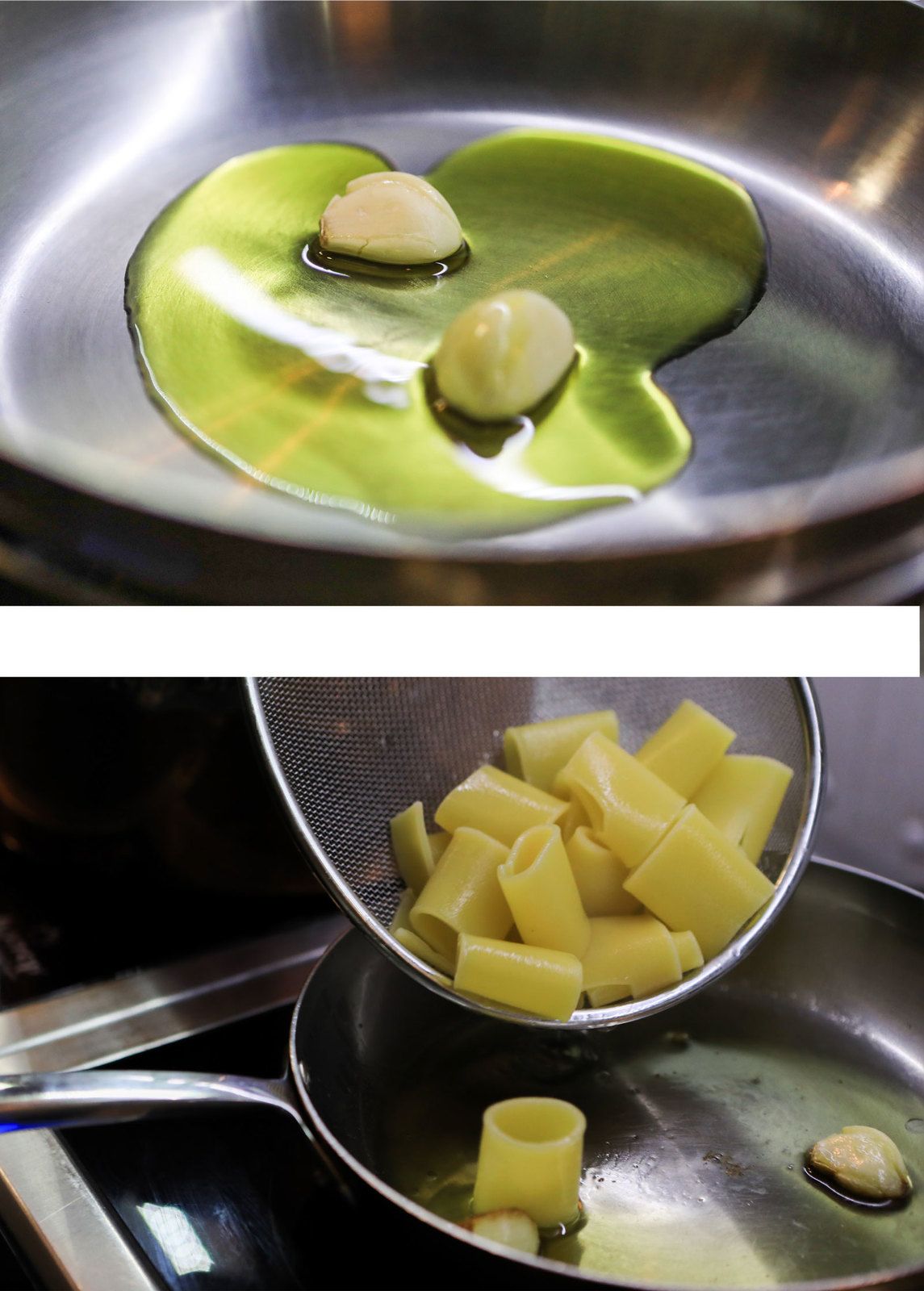
STEP 3
Let pasta cool for 45 seconds, then add it to the eggs and Parmigiano Reggiano mixture directly in the bowl.
STEP 4
Mix carefully until the pasta is fully coated with sauce.
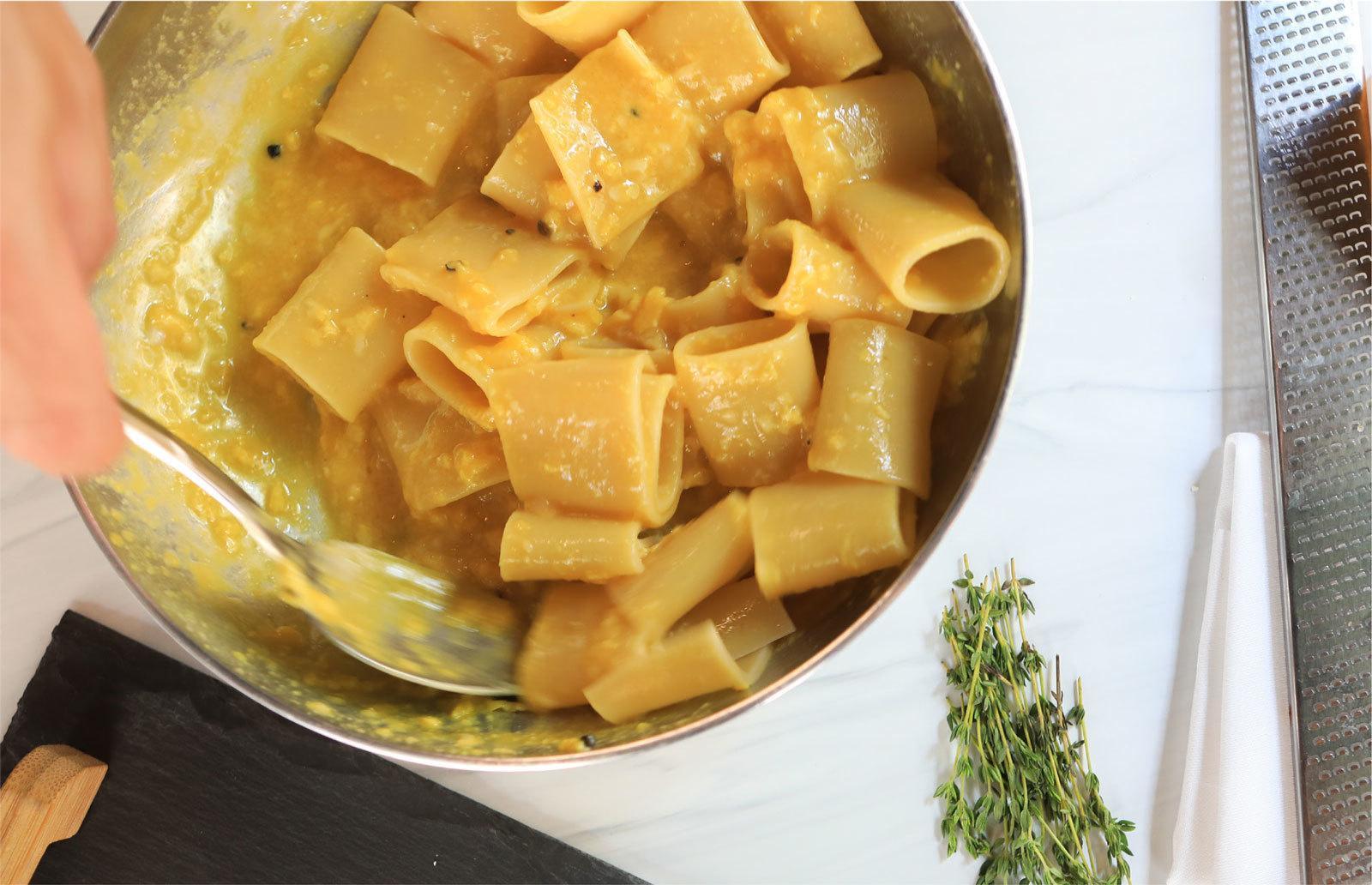
STEP 5
Plate and garnish with parsley and more Parmigiano Reggiano cheese.
Buon appetito!

MAIN
Cacio e Ovo with
Parmigiano Reggiano® cheese
-
15m
PREP
-
12m
COOK
-
390
CALORIES
-
4
SERVINGS
Chef Michele Casadei Massari shares a simple Cacio e Ovo recipe. This is the perfect dish to highlight all of Parmigiano Reggiano cheese best qualities: solubility, umami, and sapidity.
Cacio e Ovo was a necessary stable for the people who lived outside of the regions of Lazio and Abruzzo. It was hearty and the ingredients were easy to find and keep.
It is considered to be where pasta carbonara originated from. “It’s almost like the lovechild of Carbonara and Cacio e Pepe!” say Chef Michele.
Ingredients:
1lb pasta of choice, cooked al dente
4oz Parmigiano Reggiano cheese, finely grated
4 eggs
1 clove garlic
5 tbsp extra virgin olive oil
1oz parsley, chopped
Black pepper
Salt
Hint:
If you are able, always try to get farm fresh eggs. Leave them out of the refrigerator for 1 hour before cooking. To check how fresh your eggs are, fill a bowl with about four inches of cold water and gently place your egg inside. Very fresh eggs will sink to the bottom and lay on their sides, if an egg stays at the bottom but stands on its small end, it’s still fine to eat; just not quite as fresh.
In this recipe use Parmigiano Reggiano cheese aged 24months. To make sure that you are buying Parmigiano Reggiano PDO cheese, look for the distinctive dotted rind and make sure it is a product of Italy, otherwise it is not Parmigiano Reggiano.
MAIN
Cacio e Ovo with
Parmigiano Reggiano® cheese
-
15m
PREP
-
12m
COOK
-
390
CALORIES
-
4
SERVINGS
Chef Michele Casadei Massari shares a simple Cacio e Ovo recipe. This is the perfect dish to highlight all of Parmigiano Reggiano cheese best qualities: solubility, umami, and sapidity.
Cacio e Ovo was a necessary stable for the people who lived outside of the regions of Lazio and Abruzzo. It was hearty and the ingredients were easy to find and keep.
It is considered to be where pasta carbonara originated from. “It’s almost like the lovechild of Carbonara and Cacio e Pepe!” say Chef Michele.
Directions:

STEP 1
Cook the pasta al dente which is about 1 minute less the time it says on the packaging. Meanwhile, in a heatproof bowl, whisk eggs, season with salt and pepper. Add the Parmigiano Reggiano and combine until the mixture is consistent and full-bodied.

STEP 2
Heat extra virgin olive oil in a non-stick skillet and add garlic. Cook until golden brown and fragrant. Add cooked pasta and sauté until coated in the garlic and oil.

STEP 3
Let pasta cool for 45 seconds, then add it to the eggs and Parmigiano Reggiano mixture directly in the bowl.
STEP 4
Mix carefully until the pasta is fully coated with sauce.

STEP 5
Plate and garnish with parsley and more Parmigiano Reggiano cheese.
Buon appetito!

Ingredients:
1lb pasta of choice, cooked al dente
4oz Parmigiano Reggiano cheese, finely grated
4 eggs
1 clove garlic
5 tbsp extra virgin olive oil
1oz parsley, chopped
Black pepper
Salt
Hint:
If you are able, always try to get farm fresh eggs. Leave them out of the refrigerator for 1 hour before cooking. To check how fresh your eggs are, fill a bowl with about four inches of cold water and gently place your egg inside. Very fresh eggs will sink to the bottom and lay on their sides, if an egg stays at the bottom but stands on its small end, it’s still fine to eat; just not quite as fresh.
In this recipe use Parmigiano Reggiano cheese aged 24months. To make sure that you are buying Parmigiano Reggiano PDO cheese, look for the distinctive dotted rind and make sure it is a product of Italy, otherwise it is not Parmigiano Reggiano.
Complete your meal
STARTERS,GAME DAY SNACK,Holiday
Potato Wedges with Rosemary and Parmigiano Reggiano® cheese
35
MINUTES
5
INGREDIENT
186
CALORIES
SUBMIT YOUR RECIPES
Become a superstar!
Every month our curatorial team will review the recipes that have been submitted. If yours is selected we will send you a nice gift and will feature the recipe on our website (along with your photo and bio), and we’ll also post it on our Social Media platforms.

